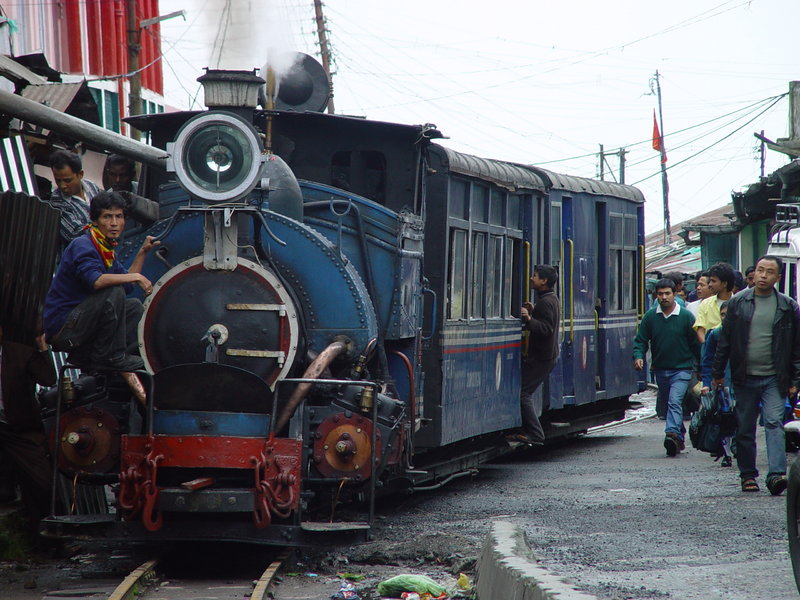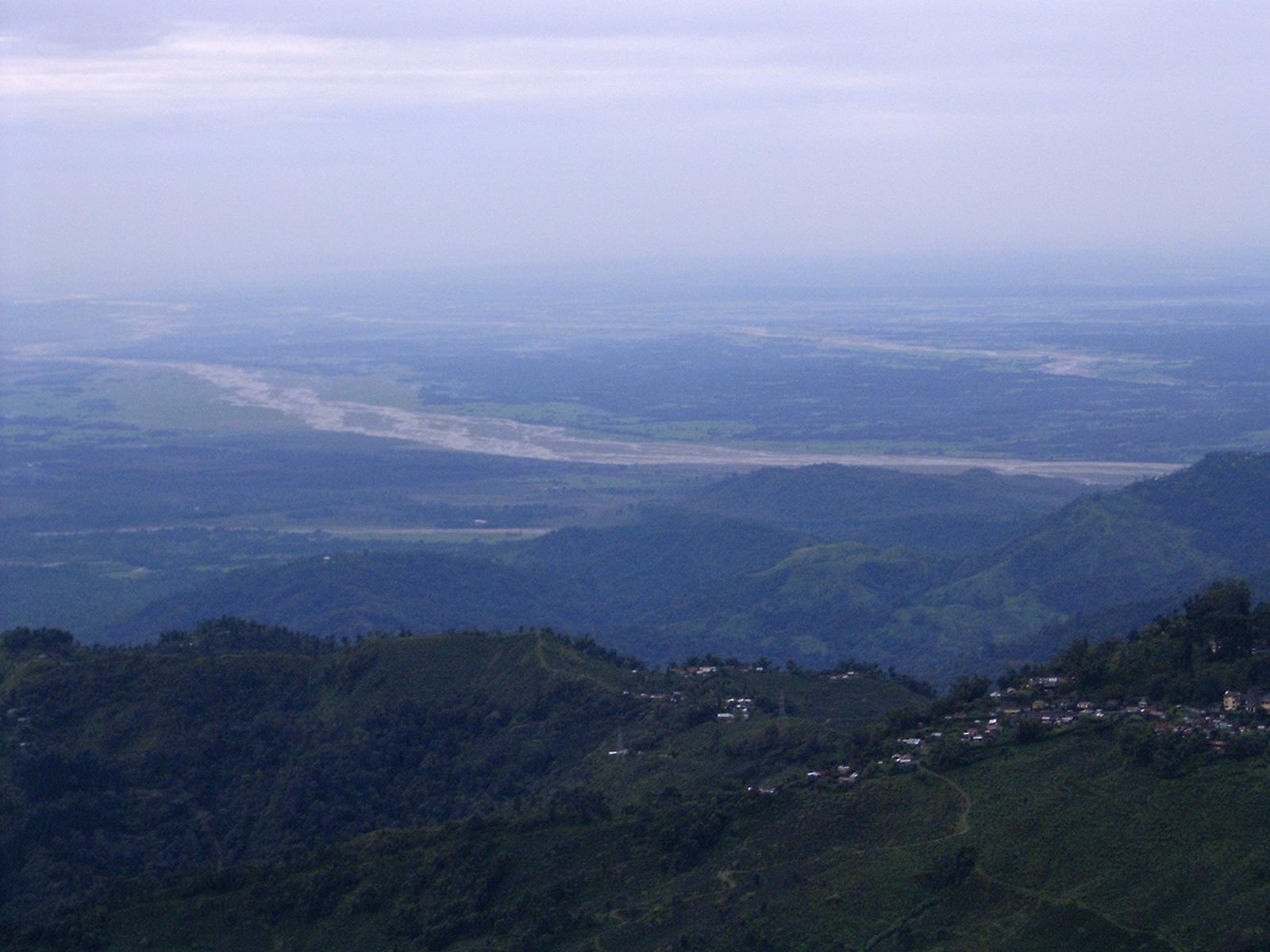|
Kurseong – The land of the white orchid
 General Information General Information
Area - 5.05 sq. km
Altitude - 1458 Metres (4864 ft)
Population - 35000 (app)
Rainfall - 160 inches (Annual)
Best Season September to mid June
Clothing Summer - Light Woollens Winter : Heavy Woollens
Languages - Nepali, Hindi, Tibetan, English and Bengali
Kurseong is a perfect place for people who want to derive the pleasures of being
in an alpine surrounding without worrying about higher altitudes and bone-chilling
cold weather. Kurseong does not suffer from severe winters and a healthy, comfortable
climate is prevalent throughout the year except the monsoon season. It rains non-stop
in the rainy season; infact, Kurseong receives the highest amount of rainfall after
‘Cherrapunjee’ in Meghalaya. Ironically, such heavy amount of rainfall
is ideal for white orchids that adorn the hill-slopes of Kurseong in abundance.
The natural beauty of Kurseong thrives because of the generosity of the rain-gods.
 Kurseong was ceded to the British Empire by the king
of Sikkim in 1835. Later in 1880, the small hamlet became a tourist destination
for the colonial authorities and was a preferred place for sanatoriums where the
sick would recuperate. Thereafter, the Kurseong T.B. Sanatorium was built because
the climate and environment was healthy and rejuvenating for the sick and elderly. Kurseong was ceded to the British Empire by the king
of Sikkim in 1835. Later in 1880, the small hamlet became a tourist destination
for the colonial authorities and was a preferred place for sanatoriums where the
sick would recuperate. Thereafter, the Kurseong T.B. Sanatorium was built because
the climate and environment was healthy and rejuvenating for the sick and elderly.
The serenity and beauty of Kurseong has also attracted and inspired famous personalities
like Rabindranath Tagore, Atul Prasad Sen, Netaji Subhash Chandra Bose and Sister
Nivedita. Mark Twain is also supposed to have visited Kurseong in 1885 and spent
some time here. It is believed that Rabindranath Tagore was inspired to write a
few poems when he visited the hill station while Netaji Subhash Chandra was sent
to Kurseong for his internship in 1936; the house he stayed is still restored in
Giddapahar, a few kilometers from Kurseong.
 As you leave the small town you can find acres of
verdant slopes covered with tea bushes – one of the finest varieties of Darjeeling
Tea is found in the tea gardens surrounding Kurseong. The finest teas are produced
by Castleton, Makaibari and Ambootia Tea Estate. Visitor can have a first hand experience
of how tea leaves are processed and prepared for production by visiting the nearby
tea factories. As you leave the small town you can find acres of
verdant slopes covered with tea bushes – one of the finest varieties of Darjeeling
Tea is found in the tea gardens surrounding Kurseong. The finest teas are produced
by Castleton, Makaibari and Ambootia Tea Estate. Visitor can have a first hand experience
of how tea leaves are processed and prepared for production by visiting the nearby
tea factories.
Even though Kurseong has lagged behind in the race to become a preferred tourist
destination compared to its glamorous counterpart Darjeeling, there is tranquility
and peace about the place that does not fail to affect a visitor – and that
quest for peace and tranquility brings him back again.
Kurseong is connected to Siliguri by two alternative routes; one is the Pankhabari
route which is faster but very steep. The other road traverses through Rongtong,
Ghayabari, Mahanadi and Gidda Pahar which provides a breathtaking view of the natural
surroundings. If you travel through this road in monsoon you can enjoy the magnificent
sight of waterfalls cascading from the hills.
What to see
 Eagle’s Craig view point
– This view point is located near the town seemingly perched on a cliff. One
can have a sweeping view of the surrounding mountain, hill, hamlets and slopes from
here. It has a cafeteria, a watch tower and a flower garden; this place also houses
the water reservoir for the entire town of Kurseong. The place also has a concrete
altar built in the park with a khukri on top called shahid smarak; it was built
by the Darjeeling Gorkha Hill Council to pay tribute to the lives that were lost
in the agitation of 1988. From here you will get a magnificent view of the plains
of Siliguri dotted with bright lights in the distance at night. Eagle’s Craig view point
– This view point is located near the town seemingly perched on a cliff. One
can have a sweeping view of the surrounding mountain, hill, hamlets and slopes from
here. It has a cafeteria, a watch tower and a flower garden; this place also houses
the water reservoir for the entire town of Kurseong. The place also has a concrete
altar built in the park with a khukri on top called shahid smarak; it was built
by the Darjeeling Gorkha Hill Council to pay tribute to the lives that were lost
in the agitation of 1988. From here you will get a magnificent view of the plains
of Siliguri dotted with bright lights in the distance at night.
Deer Park – The Deer Park in Dow hill area comes under the
jurisdiction of the state forest department. It was named such because large numbers
of Deers were found in the area before the menace of deforestation and poaching
arrived. If you are lucky, you might catch a glimpse of the animal trying to attract
your attention by coming out of the wilderness. Venturing inside the forest is prohibited.
Forest Museum – The forest museum is also located in Dow
Hill and is overseen by the forest department. You will get to know the types of
animals that inhabited the forest area here in the past when you visit the museum.
 Giddapahar view point – Giddapahar
view point in Giddapahar, a few kilometers from Kurseong, provides a great view
of the mountains and is a great place for clicking photographs. Giddapahar view point – Giddapahar
view point in Giddapahar, a few kilometers from Kurseong, provides a great view
of the mountains and is a great place for clicking photographs.
Giddapahar Seti Mata Temple – This temple is carved out of
an ancient rock and is dedicated to Goddess Durga. A sacred place of the Hindus.
Ambootia Temple – This temple is located within the Ambootia
Tea Estate area. It has an old temple thronged by many devotees.
Dowhill’s Girls School – Provides a glimpse of the
British era with its architecture and elegance. This school is well known for its
beautiful location surrounded by pine trees and the quality of education it provides.
Victoria Boy’s School – This school was also created
by the British and still maintains its Victorian looks and fame.
Grotto – The grotto houses the statue of Virgin Mary and
is located in a beautiful surrounding that takes you to another place and time.
It is a peaceful place and peace is what you feel when you’re there. Devotees
light candles and pray to God here; it is also frequented by young couples because
it offers seclusion.
Bhangzang Salamander Lake – It is located 14 km from Kurseong.
In the past, it used to be a favorite place for the British and people from the
neighboring towns used to hang out here frequently. A relatively unknown getaway
among the tourist destinations in Darjeeling brought to you by naturebeyond. It
is a beautiful green-tinged lake that shelters the rarest and most endangered species
of salamanders – a species under threat of extinction.
Bagora – Bagora is also called zero point because it is the
place with the highest elevation in Kurseong. It has also has a base camp of the
Indian Air Force with a helipad.
|